IAS 1 Presentation of Financial Statements
Here is the list of detailed classifications most of the classified balance sheet contains. Long-term liability is commitments that should be repaid later on, perhaps past the operating cycle or the current financial year. These are like long-term debts where installments can need 5, 10, or possibly 20 years. Those three inquiries are the principal parts of a Classified balance sheet. What a business owns is called assets, what it owes is displayed as liabilities, and how much the business is worth equivalents equity. The other assets section includes resources that don’t fit into the other two categories like intangible assets.
- Once your balances have been added to the correct categories, you’ll add the subtotals to arrive at your total liabilities, which are $150,000.
- Larger organizations use a classified balance sheet format as the format provides detailed information to the users for better decision-making.
- Such categorizing really helps the reader in understanding different relations and factors of financial position.
- What a business owns is called assets, what it owes is displayed as liabilities, and how much the business is worth equivalents equity.
A balance sheet is a financial statement that displays the total assets, liabilities, and equity of your business at a particular time. A https://business-accounting.net/ is a financial statement that provides a detailed breakdown of a company’s assets, liabilities, and equity. It organizes these components into specific categories to provide a more comprehensive view of a company’s financial position. A classified balance sheet is often used by stakeholders such as investors, creditors, and analysts to assess a company’s financial stability and make informed decisions. By classifying assets and liabilities into current and non-current categories, the balance sheet provides a clearer and more organized representation of the company’s financial position.
Advisory services provided by Carbon Collective Investment LLC (“Carbon Collective »), an SEC-registered investment adviser. Continuing with Bob and his donut shop example, we can see how his traditional balance sheet and his classified balance sheet would look at the end of his financial period, i.e. month-end. Depending on the company, different parties may be responsible for preparing the balance sheet.
PROBLEM 4–3 (LO Closing Entries and Financial Statements
These are short term debt obligations that need to be paid back either by utilizing the current assets or by taking on new current or long-term liabilities. The detailed categorization of your business’s assets and liabilities in a classified balance sheet will help anyone viewing your balance sheet easily access the specific information they need. Smaller businesses typically use an unclassified balance sheet, but if you’re looking for a report that provides the same data in a more detailed format, you’ll want to prepare a classified balance sheet. A classified balance sheet is important because it provides a snapshot of a company’s financial position.
Both a classified and an unclassified balance sheet must adhere to this formula, no matter how simple or complex the balance sheet is. This simple equation does a lot in demonstrating that shareholders’ equity is the residual value of assets minus liabilities. Despite these limitations, stakeholders can overcome them by combining the information from the classified balance sheet with other financial statements and non-financial metrics. Supplementary disclosures, such as footnotes or management discussions, can also provide additional insights into the company’s financial position and help address some of the limitations of a classified balance sheet. In summary, a classified balance sheet serves as a valuable tool in evaluating a company’s financial position. It provides stakeholders with crucial information for making informed decisions, assessing financial stability, and understanding a company’s short-term and long-term financial obligations.
Notes to the Financial Statements
Harold Averkamp (CPA, MBA) has worked as a university accounting instructor, accountant, and consultant for more than 25 years. It all depends on who generates the balance sheet, and who the target audience is. Our goal is to deliver the most understandable and comprehensive explanations of climate and finance topics. Different accounting systems and ways of dealing with depreciation and inventories will also change the figures posted to a balance sheet.
Companies prefer to take on high levels of long-term debt for reasons including longer payback period, lower cost of debt and potential to raise larger amounts of capital. The internal capital structure policy/decisions of a company will determine how much of long-term debt is raised by a company. The one major downside of high debt levels in the accompanying higher levels of financial leverage which could severely amplify a company’s losses during an economic downturn. Cash flow statements, profit and loss statements, tax returns, and balance sheets are all different reports that break down your business’s finances for their own specific purposes. Designed to show what a business owns, what it owes, and what has been invested in the company, the balance sheet, like the income statement and statement of cash flow, is one of the three main financial statements.
What Are the Uses of a Balance Sheet?
For example, rather than including one “assets” category, a classified balance sheet may break down assets into current and fixed assets. It may also separate assets that are normally added together, such as FF&E, into how much is tied specifically to furniture, specifically to fixtures, and specifically to equipment. Like your unclassified balance sheet, the totals of these classifications must follow the accounting equation, detailed below.
Terminology
Each category consists of several smaller accounts that break down the specifics of a company’s finances. These accounts vary widely by industry, and the same terms can have different implications depending on the nature of the business. But there are a few common components that investors are likely to come across.
Classified Balance Sheet Template
As opposed to an income statement which reports financial information over a period of time, a balance sheet is used to determine the health of a company on a specific day. Balance sheets allow the user to get an at-a-glance view of the assets and liabilities of the company. In this example, Apple’s total assets of $323.8 billion is segregated towards the top of the report. This asset section is broken into current assets and non-current assets, and each of these categories is broken into more specific accounts.
In a classified balance sheet, financial information is presented in detail. The components of assets, liabilities, and equity are broken down into further sub-headings to provide in-depth information to the users. The components of assets and liabilities are also classified as current and non-current.
As you can see, each of the main accounting equation accounts is split into more useful categories. This format is much easier to read and more informational than a report that simply lists the assets, liabilities, and equity in total. You can use this example as a template for your homework or business. Public companies, on the other hand, are required to obtain external audits by public accountants, and must also ensure that their books are kept to a much higher standard. A balance sheet is limited due its narrow scope of timing.
However, it is mandatory to prepare and disclose the financial statements for public limited companies. A classified balance sheet presents an obvious picture of financial health. The equation will likewise remain the same in the classified balance sheet. This implies that when you add all groups of assets, it will be equal to the sum of all categories of equity and liabilities.




